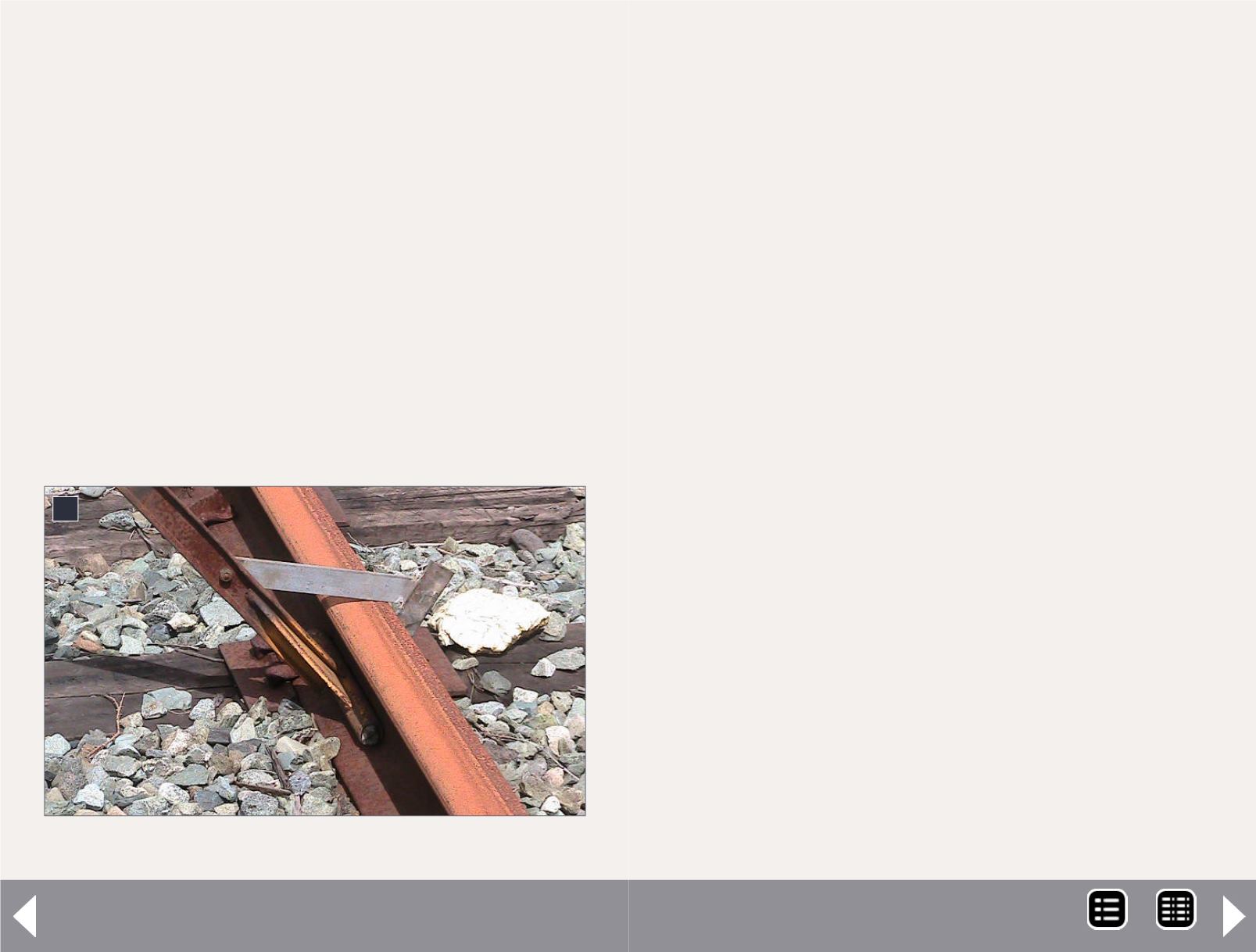
between suppliers and railways, but they must be high enough
so approaching trains can easily see them. See Rule 846, CROR
in the sidebar. Cloth flags with a metal stake on each side of
the flag are used along the side of the track to indicate slow
orders, stop orders and resume normal speed.
Some blue metal signs have lettering on them to tell staff what
type of work is being done on the equipment. As an example
a blue sign might say, “STOP CREW AT WORK.” Metal signs are
usually blue, but might also be red, yellow, or green and must
be painted on both sides. For those modeling the modern era,
these signs must be reflective. In some cases a white reflective
border is used on blue signs. The era being modeled will deter-
mine whether or not trackside flags are metal or cloth. For
maintenance crew convenience almost all modern trackside
signs are cloth.
Maintenance flags - 3
4
4. Rail clamp detail.
Blue flags are one of the most common flags used on a railway,
and are used universally to designate maintenance personnel
working on rolling stock or equipment. Rule 26 in the CROR
defines how blue flags are to be used. These flags are used
mostly in yards, around engine houses and sidings, and are
placed on the track where the damaged/broken piece of rolling
stock is situated. They can be coupler-mounted, rail-mounted,
or tie-mounted, are usually made of metal, and must be at
least 18” x 12”.
The maintenance foreman in charge of the work will place
the flag on the track before work is started on the designated
piece of equipment. Only the person who placed this flag, or
another employee of the same grade may remove the flag.
Blue flags placed on a rail can be clamped to the rail with vari-
ous types of clamps, depending upon who manufactured the
clamp. Blue flags that are secured to a tie would have a simple
spring-loaded plunger type locking/unlocking mechanism that
allows them to be lowered and lie flat on the ties when the flag
is no longer required. Some railways also allow the use of cou-
pler-mounted blue flags. These are usually used in the area of
equipment maintenance facilities. If the track is double-ended
then a blue flag must be placed on both sides of the car, or row
of cars, in a clearly visible location that will allow approaching
engines sufficient time to stop. If the flag is to remain in place
during the hours of darkness, a blue light will be mounted to
the flag. Blue flags are the easiest flag to incorporate into our
model railroads [1, 2, 3 and 4].
Red flags are used to indicate a Stop Order. Except under the
circumstances outlined in Rules 840.1, 840.2, and 840.3, they
are always preceded by a yellow-over-red flag. Maybe a track
crew is clearing a downed tree, fallen rocks, replacing a rail, or
MRH-Dec 2014


